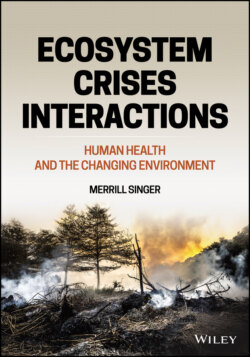Читать книгу Ecosystem Crises Interactions - Merrill Singer - Страница 34
2.3 Modern ecology
ОглавлениеAs noted, the modern science of ecology is one of the key fields concerned with developing an objective understanding of the complex interconnections that make up the environment. Of no less interest are the limits of interconnection. As the urban ecologist Liam Heneghan (2015), using the classic “butterfly effect” illustration of connectedness, states: “if the dominoes line‐up and the circumstances are just so, a butterfly’s wing beat over the Pacific may hurl a typhoon against its shores, but more often than not such lepidopterous catastrophes do not come to pass.” Still, a lesson of ecology is that small changes in initial conditions can, at a certain point, lead to drastic outcomes—an issue taken up in Chapter 10.
Ecology’s immediate scholastic roots lie in the efforts of 19th‐century biologists to understand the number of species, their distribution around the planet, and the nature of relations among them. Questions about such issues motivated wide‐eyed and curious naturalists of the era like Henry Walter Bates, Alfred Russel Wallace, and Charles Darwin (Fig. 2.2) to venture out and witness the species of the world in their local habitats. During his nearly 5‐year voyage as ship’s naturalist aboard the HMS Beagle, Darwin filled many notebooks and letters home with careful observations on animals, plants, and geology. His record of the distribution of species in the various places he visited in South America, including the Galápagos Islands, would provide him with the insights he used for the rest of his life in framing his understanding of biological evolution.
Over the years since Darwin and his peers carried out their groundbreaking studies, ecology has developed several core concepts to help frame this understanding.
Fig. 2.2 Charles Darwin.
Source: National Portrait Gallery.
